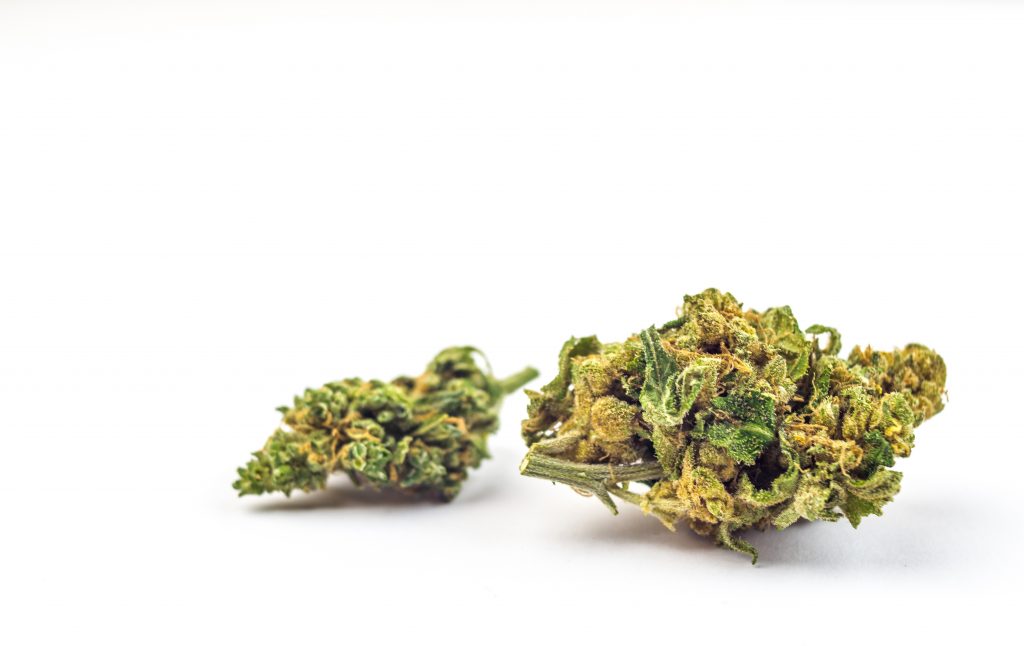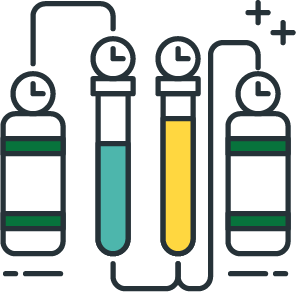
Technology is Leaving its Fingerprint on the Cannabis Industry
As a relatively new industry, cannabis is growing in leaps and bounds. Thanks to the normalization and legalization of our favourite plant, retailers and producers are developing better technologies for crafting and improving cannabis products and user experiences. Cannabis is at the forefront of a host of new technologies set to improve breeders rights, processing and extraction, and overall, the customers experience from seed to sale.
Read on to discover some of the new kinds of tech being incorporated behind-the-scenes to advance the cannabis industry.
Cannabis Profiling
Cannabis is a highly regulated and standardized industry in Canada. Medical cannabis has been regulated since 2001, but with consumer products now available for recreational use and growing in popularity, a new field of cannabis profiling is looking to make sure consumers get the same experience every time they buy a strain, no matter who produces it. A new-to-the-industry technology called Nuclear Magnetic Resonance (NMR) redefines what it means to accurately assess the chemical structure of various cannabis products.
The process assesses the magnetic field around the atomic nuclei of the plant to determine the molecular structure. This technology can essentially create a cannabis “fingerprint,” revealing pharmacological properties, geographical origin, the strain and hybrid, and the quality of a given product. This is an important step for the industry, as one producer’s version of a strain can be completely different from what you’d get from another. It’s difficult for growers to protect and patent their strains, and some being sold under one name could be genetically closer to another – Alaskan Ice being sold as Bubba Kush for example. NMR is helping to standardized industry genetics, protect the intellectual property of producers, and making it easier for the consumer to choose a strain that meets their needs.
Many companies are working on methods of ensuring a regulation-compliant and consistent product, such as the collaboration between Bruker and Purity-IQ, the Purity-IQ Cannabis Fingerprint. This initiative combines NMR screening and genomic profiling to identify the chemical compounds in a specific cannabis strain, ensuring consistent quality and accurate dosing for consumers. The two companies are proposing a global Purity-IQ cannabis registry. According to them, this registry will “identify and differentiate products, build intellectual property, ensure authenticity, drive confidence in product quality claims, allow access to new markets, and protect brand reputation.” This will help breeders certify and protect their product, while giving consumers confidence that what they’re getting is the real deal.
Other companies are also interested in creating cannabis registries, such as CBD Global Extracts, which has compiled a searchable database of information such as Certificates of Analysis and Certificates of Cultivation. TruTrace Technologies has developed a registry called StrainSecure, that collects test results as well. This is a monumental task, but a single database across the entire industry would mean a place where producers and consumers can verify the strains they’re using have been tested for consistency and quality. As an authorized cannabis retailer, we have a duty to educate, and it will be important to follow how the industry continues to progress in fields like profiling to bring an informed experience for our customers.
Precision Cannabis Extraction
Extracting cannabinoids can be a complicated process, and industrial solvents like butane and alcohol are being phased out in Canada. In the typical extraction process, trichomes from the plant are extracted through the use of a solvent which, when filtered and evaporated, leaves us with a concentrated form such as shatter, wax or distillate . The method is cheap and easy, but can leave harmful residue and adulterants in the finished product, no matter how efficient. Carbon dioxide (CO2) extraction is another method where supercritical CO2 is pumped through a chamber holding the plant material, separating the trichomes from the plant material, which are then collected to create extracts. While effective, this method can damage the terpenes and phytochemicals that are important to the potency and profile of the extract.
Companies such as Cool Clean Technologies are creating super cold CO2 extraction systems that can remove cannabinoids from the plant matter without heating it up and causing potential damage to the cannabis profile. Almost all of the CO2 is recaptured making it a safe and sustainable process. Vancouver-based Radient Technologies has developed Microwave Assisted Processing (MAP), that heats the plant matter with microwaves instead of using a typical solvent or CO2. At their facilities in Edmonton, they’ve shown that MAP saves time and energy in the extraction process, while also increasing purity of the final product. This method is an innovative way to isolate those cannabinoids and terpenes that make for an excellent cannabis experience.
The technologies mentioned are not the only way extraction methods are changing. The industry is always trying to find safer, more efficient, and more sustainable ways to operate and bring the best product to the consumer. CBD is propelling the cannabis industry forward and helping to normalize and de-stigmatize the use of the plant. Though ethanol and CO2 are still widely used in the development of concentrate products, solventless extraction is gaining popularity too, and systems like MAP are paving the way for an exciting future in cannabis tech.

The Virtual User Experience
When’s the last time you’ve seen technology integrated at your local cannabis retailer? Virtual Reality (VR) and Augmented Reality (AR) have been around since the 90’s, but are now being adopted by the modern cannabis industry. Especially with the onset of COVID-19, being able to get the dispensary experience at home is an important development in cannabis technology.
Suppose cannabis consumers are hesitant to enter brick-and-mortar shops to slow the spread of the virus. In that case, VR retail experiences like those offered by WeedVR can help consumers choose the right type of product from the comfort of their own homes. VR allows for more complete immersion relative to AR, and the feeling of really being in a dispensary. Users can see not just the store’s physical dimensions, but the product too, along with all the information they would typically get presented in a unique and informative way. The aim is to educate and inform consumers in a virtual environment where they can take their time learning about and exploring the huge catalogue of products offered by their local dispensaries.
In terms of AR, companies such as Nextech AR Solutions are hard at work creating AR experiences for cannabis consumers. These include being able to view flower in 3D in your own living room, or a virtual tour of your favourite dispensary. State-of-the-art 3D cameras can capture close-ups of luscious trichomes on the bud, giving consumers a better idea of what kind of flower is on the market. Companies are also working on AI technology that can project holographic “budtenders” into your home, enhancing your shopping experience without having to step foot outside. As our entire world continues to adapt to the realities of Covid-19, it will be interesting to see how cannabis retailers and producers harness new VR and AR technologies to ensure safe and informative shopping opportunities for consumers. Maybe virtual cannabis “tastings” or 3D farm tours are next?
Innovation in Cannabis Technology
There have been many new innovations and improvements in cannabis technology over the past few years, and there are sure to be more exciting things to come. As consumers become more knowledgeable of their product, new technologies can create a better user experience every step of the way. It allows your bud to be precisely identified through NMR, assessed for its effects and potency. It can remove solvents from the extraction process, meaning purer and healthier extracts. And it creates opportunities for customers to engage with cannabis from the comfort of their own home, a necessary step in developing safer shopping habits during a pandemic. As cannabis enthusiasts, our guides are always looking out for new products and technologies to improve your cannabis experience and keep you informed. Make sure to stop by our store if you have any questions about the latest products, and maybe in the future we’ll see you in your living room!
What new technologies are you most excited about in the cannabis industry? Is there anything we didn’t mention that you’d like to see? Let us know in the comments below
